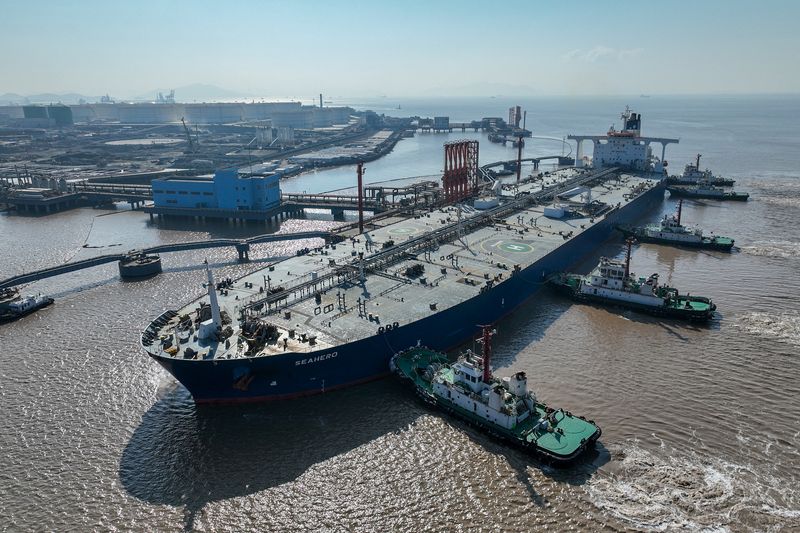Oil prices rise 2% after US rate cut
By Shariq Khan
NEW YORK (Reuters) -Oil prices rose by nearly 2% on Thursday after the Federal Reserve's large cut in U.S. interest rates helped global benchmark Brent crude recover from its lowest in nearly three years hit last week.
Brent futures rose to $74.79 a barrel by 2:06 p.m. ET (1806 GMT), up by $1.17, or 1.6%, and rebounding from last week's levels below $69 a barrel. U.S. crude gained $1.17, or 1.7%, to $72.08 a barrel.
The U.S. central bank cut interest rates by half a percentage point on Wednesday. Interest rate cuts typically boost economic activity and energy demand, but the market also saw it as a sign of a weaker U.S. labor market that could slow the economy.
The Bank of England on Thursday held interest rates at 5.0%.
Crude prices were also being boosted by rising tensions in the Middle East, said Tim Snyder, chief economist at Matador Economics.
Walkie-talkies used by Lebanese armed group Hezbollah exploded on Wednesday following similar explosions of pagers the previous day. Security sources said Israeli spy agency Mossad was responsible, but Israeli officials did not comment on the attacks.
Declining global crude stockpiles should also support oil prices going forward, pushing Brent back above $80 in the coming months, UBS analysts said in a note to clients.
Crude inventories in the U.S., the world's top producer, fell to a one-year low last week, government data showed on Wednesday. [EIA/S]
The decline in inventories could accelerate next week as U.S. exports should rebound significantly after disruptions from Hurricane Francine last week, strategists at Macquarie told clients.
A counter-seasonal oil market deficit of around 400,000 barrels per day (bpd) will support Brent crude prices in the $70 to $75 a barrel range during the next quarter, Citi analysts said.
Weak demand from China's slowing economy was limiting oil's gains, said Alex Hodes, oil analyst at brokerage StoneX.
Refinery output in China slowed for a fifth month in August, statistics bureau data showed over the weekend. China's industrial output growth also slowed to a five-month low last month, and retail sales and new home prices weakened further.
Source: Investing.com
